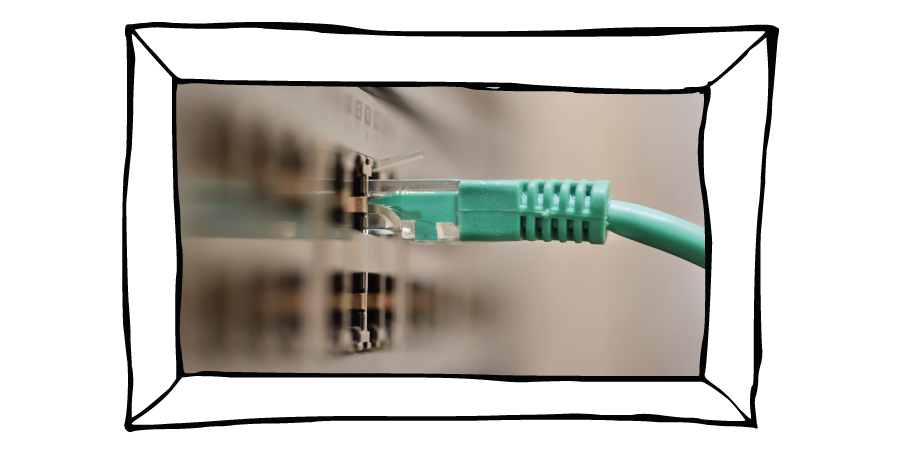What is an Ethernet cable?

Given how the world works today, connections between devices or setting up networks, are really important tasks. However, where the real question lies is what cable best suits the network. Ethernet cables are one of the most feasible and reliable solutions!
What is Ethernet?
Since 1982, ethernet has been the way forward as it became standardized by the Institute of Electrical and Electronics Engineers (IEEE). Since then, Ethernet has been used to connect a network of computers or to connect other network devices. But, how does Ethernet work then? Ethernet cables are the answer.
What does an Ethernet Cable do?
Ethernet cables are usually plugged in to Ethernet ports on various devices. One of the most common uses of Ethernet cables is connecting a Wi-Fi modem to an internet port or even a telephone line with the given modem.
What does an Ethernet Cable look like?
Bigger looking than a phone cable but still similar to phone cables, an ethernet cable has double the wires than a phone cable. Apart from that, these cables have a registered Jack 45 (RJ45) connector at their end. These cables have a clip at the end in order to connect them securely with the Ethernet jack which often lights up when successfully connected.
Ethernet Cable structure:
One of the most common structures in an ethernet cable is the twisted pair. They are two wires twisted together which transmit data in both directions reducing any electrical noise in the cable. A twisted pair can be shielded and unshielded. An ushielded pair doesn’t have foil or braided shielding around it, while a shielded pair comes with braided or foil shielding.
Types of Ethernet Cables:
- Cross over cables: Connecting 2 devices of the same kind. Example: Two computers.
- Solid cables: Cheaper to produce, single wire and used by majority business networks.
- Stranded cables: Contains smaller wires working together. Better suited to home usage since they can break.
Categories of Ethernet Cables:
- Cat5 – Speed up to 100 Mbps.
- Cat5e -Updated version of Cat5 with better speed
- Cat6 – Speeds up to 10 gigabits. Stiffer cables than Cat5.
- Cat6a – Speeds up to 10 gigabits but double the bandwidth of Cat6.
- Cat7 – Speeds up to 10 Gbps till a 15 meter distance. Twisted cables.
- Cat8 – Speeds up to 40 Gbps and a bandwidth of 2000Mhz. Designed for business and data centers.
Limitations:
A major problem with ethernet cables arises with how long they can be. With the focus being on the longest cable not compromising on the quality, Ethernet cables (Cat5) can reach a maximum of 324 feet while Cat6 can reach a length of 700 feet maximum. With cables longer than these, performance is compromised.
Power over Ethernet (POE):
Apart from just connecting devices, some of these cables can receive electrical current through, this is known as 'Power over Ethernet' commonly shortened to POE. So, just a wire can act as a connection along with powering the device too. Useful when few electrical sockets are available. However, injectors or POE network switches need to be installed.
Why use an Ethernet Cable:
An advantage of Ethernet cables is they are renowned for being secure, whilst there are questions surrounding the security of some Wi-Fi networks. A major advantage of cabling an ethernet network is to give better speed, where Wi-Fi networks can often become slow in crowded spaces or busy households having too many members or become the victim of Wi-Fi drop zones. This is where Ethernet cables take the lead with greater & stable speed.

